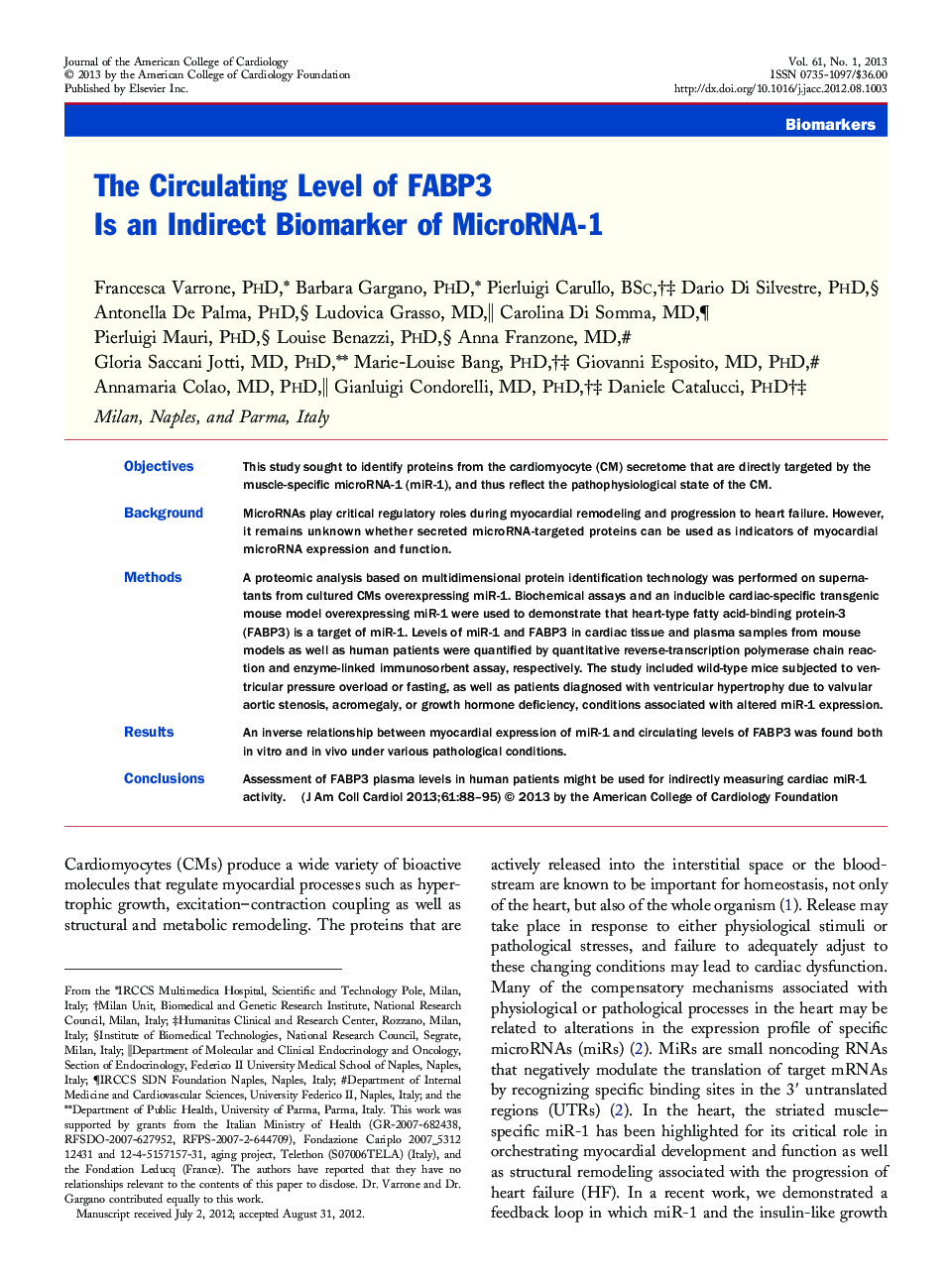| Article ID | Journal | Published Year | Pages | File Type |
|---|---|---|---|---|
| 2946258 | Journal of the American College of Cardiology | 2013 | 8 Pages |
ObjectivesThis study sought to identify proteins from the cardiomyocyte (CM) secretome that are directly targeted by the muscle-specific microRNA-1 (miR-1), and thus reflect the pathophysiological state of the CM.BackgroundMicroRNAs play critical regulatory roles during myocardial remodeling and progression to heart failure. However, it remains unknown whether secreted microRNA-targeted proteins can be used as indicators of myocardial microRNA expression and function.MethodsA proteomic analysis based on multidimensional protein identification technology was performed on supernatants from cultured CMs overexpressing miR-1. Biochemical assays and an inducible cardiac-specific transgenic mouse model overexpressing miR-1 were used to demonstrate that heart-type fatty acid-binding protein-3 (FABP3) is a target of miR-1. Levels of miR-1 and FABP3 in cardiac tissue and plasma samples from mouse models as well as human patients were quantified by quantitative reverse-transcription polymerase chain reaction and enzyme-linked immunosorbent assay, respectively. The study included wild-type mice subjected to ventricular pressure overload or fasting, as well as patients diagnosed with ventricular hypertrophy due to valvular aortic stenosis, acromegaly, or growth hormone deficiency, conditions associated with altered miR-1 expression.ResultsAn inverse relationship between myocardial expression of miR-1 and circulating levels of FABP3 was found both in vitro and in vivo under various pathological conditions.ConclusionsAssessment of FABP3 plasma levels in human patients might be used for indirectly measuring cardiac miR-1 activity.
